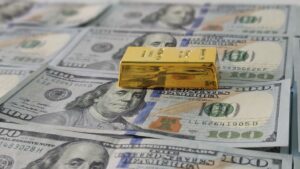Daily News Nuggets | Today’s top stories for gold and silver investors
October 24th, 2025
Inflation Cools — But Stays Above Target
Prices rose 3.0% in September compared to a year ago, landing below the 3.1% economists expected. The 0.3% monthly increase also came in lighter than forecasts. The report — released nine days late due to the government shutdown — was pushed out specifically so the Social Security Administration could calculate cost-of-living adjustments for 2026.
Gasoline jumped 4.1% on the month, but shelter costs (a third of the index) rose just 0.2%, and used car prices actually fell. For the Fed, which meets next week, this keeps a quarter-point rate cut firmly on the table. Markets rallied on the news, with Treasury yields dipping and stock futures climbing. Still, at 3%, inflation remains well above the Fed’s 2% target — a reminder that while the worst may be behind us, the battle isn’t over.
The CPI report wasn’t just about market reactions — it was the final piece needed for a critical calculation.
Social Security Gets 2.8% Bump — But Groceries Are Rising Faster
Social Security recipients will receive a 2.8% cost-of-living adjustment in 2026, translating to an average monthly increase of $56. The boost will affect nearly 71 million Americans starting in January and reflects moderating inflation compared to the 8.7% spike in 2023.
But here’s the catch: essential expenses are climbing faster than the adjustment. Over the past year:
- Electricity: up 5.1%
- Natural gas: up 11.7%
- Meat, poultry, fish, and eggs: up 5.2%
For retirees on fixed incomes who spend a larger share of their budget on necessities, the 2.8% increase may not stretch as far as it needs to. As one policy expert noted, cost-of-living adjustments “can’t solve all the financial challenges households face.” For those already feeling the pinch, that’s becoming increasingly clear.
While retirees digest their 2026 adjustments, currency traders were already moving on the softer-than-expected inflation print.
Dollar Slips as Softer Inflation Clears Path for Fed Cuts
The U.S. dollar weakened Friday after inflation came in cooler than expected, reinforcing bets that the Federal Reserve will cut rates again next week. The September CPI rose 3.0% year-over-year — below the 3.1% forecast — prompting traders to pile into risk assets and out of the greenback.
Treasury yields fell and stock futures rallied, with markets now pricing in near-certainty of a quarter-point rate cut at the Fed’s November meeting. A weaker dollar typically supports gold and silver prices, making dollar-denominated commodities cheaper for international buyers. With the Fed in easing mode and inflation showing signs of cooling, the currency backdrop remains supportive for precious metals.
A weaker dollar and dovish Fed? That’s music to precious metals investors’ ears.
Gold Funds See Largest Weekly Inflow Ever
Gold funds pulled in $8.7 billion last week — the largest weekly inflow on record — as investors flooded into the metal amid ongoing economic and geopolitical uncertainty. That brings total inflows over the past four months to $50 billion, according to Bank of America Global Research.
Gold hit a record high of $4,381 per ounce on Monday before pulling back to around $4,070, still up more than 60% for the year. Analysts say the rally is far from exhausted. Central banks continue buying aggressively, de-dollarization is accelerating, and geopolitical risks remain elevated. “Even if short-term corrections emerge, the broader trend remains firmly upward,” said Russell Shor, senior market analyst at Tradu. For investors looking for a hedge against uncertainty, gold’s momentum shows no signs of fading.
Gold’s momentum reflects more than just short-term positioning — it’s a bet on a complicated economic picture ahead.
U.S. Economy Holding Up — But Risks Are Building
The International Monetary Fund upgraded its 2025 U.S. growth forecast to 2.0%, citing stronger-than-expected AI investment and resilient consumer spending. That’s the good news.
The warning signs? Trade uncertainty, stubborn inflation, and tight labor markets are all flashing caution. The IMF warned these factors could keep inflation elevated while weighing on growth — a scenario that would complicate the Fed’s next moves.
For precious metals investors, the math is straightforward: if inflation stays sticky and growth slows, that’s a recipe for continued demand for gold and silver. A resilient economy might keep the Fed from cutting rates aggressively, which typically pressures metals. But if inflation proves more persistent than expected, gold’s role as an inflation hedge becomes even more relevant. The tug-of-war continues.



![Is Now the Best Time to Buy Silver? [Silver 2025–2030 Forecasts]](https://goldsilver.com/wp-content/uploads/2025/11/price-of-silver-300x155.jpg)


